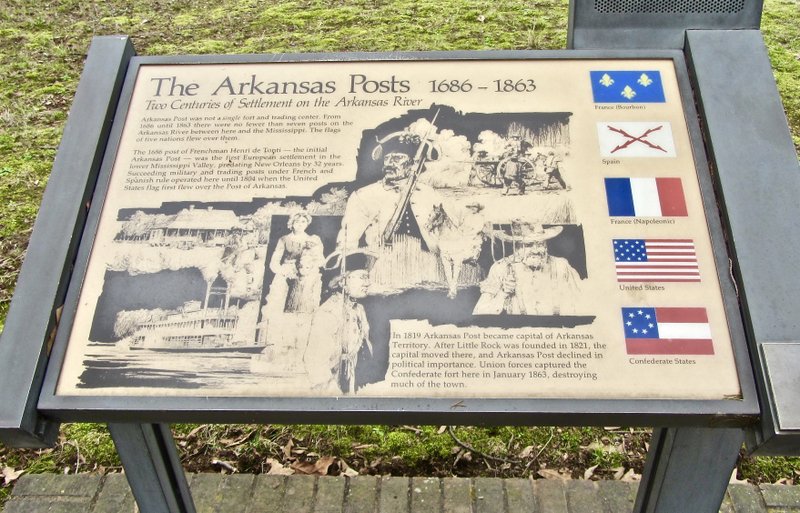ARKANSAS POST — Arkansas Territory's first governor was a Yankee, James Miller, who'd been born in New Hampshire. Appointed to the position in March 1819, he didn't make it from New England to the new territory's capital at Arkansas Post until six months later.
As Arkansas marks this month's bicentennial of the territory's founding, Miller's much-delayed arrival is among the many curiosities linked to the secluded site of Arkansas Post National Memorial, near Gillett. The bustling town of the early 19th century exists only as a walking trail, with signs showing where long-vanished buildings stood.
A map available at the National Park Service visitor center pinpoints those lost structures. One housed the Arkansas Gazette, founded here in 1819 by William Woodruff. The oldest newspaper west of the Mississippi River, it is part of the Arkansas Democrat-Gazette's genealogy.
When Miller finally showed up as governor that September, the new territory was being run by Robert Crittenden, who'd been appointed first secretary (equivalent of today's lieutenant governor). Crittenden dominated territorial rule even after Miller showed up. The local mix of American Indians, white Europeans and Africans (both free and enslaved) are said to have lived in relative harmony.
The territorial capital until government (and the newspaper) moved to Little Rock in the fall of 1821, Arkansas Post has an up-and-down history dating all the way to 1686. Fluttering at the visitor center are five national flags that have flown here — those of Bourbon France, Spain, Napoleonic France, the United States and the Confederate States of America. A Quapaw tribal flag is also hoisted.
The Quapaw formed an alliance with Henri de Tonti after the Frenchman set up a trading post here in 1686, with furs being a prime commodity. The post and a later fort were occupied sporadically by French merchants, soldiers and priests until Spain was given possession in 1763.
In the westernmost engagement of the Revolutionary War, and one of that conflict's last skirmishes, British troops aided by Chickasaw warriors attacked the Spanish-held fort on April 17, 1783. Known as Colbert's Raid, the encounter ended with the defenders prevailing, as reported on an outdoor display panel.
Spain ceded the lands of present-day Arkansas in 1800 to Napoleon Bonaparte's French empire. As part of 1804's Louisiana Purchase, the young United States took ownership. In 1819, Arkansas Post — with a population about 1,000 — was probably the new territory's largest community. After the capital moved away, the town survived until the Civil War, when the Confederacy built Fort Hindman, whose ruins today lie underwater.
After its destruction by Union forces in January 1863, Arkansas Post flickered from history until it was made a state park in 1929 and a national memorial in 1960. An information panel along the walking path explains the demise:
"The Civil War forced river traffic to cease, and in the resulting economic collapse, most residents left. The bombardment by Union gunboats in 1863 destroyed much of the village, and it did not recover after the war. Railroads and highways later bypassed Arkansas Post, isolating it economically. The Arkansas River has washed away part of the land where the town site stood."
Morris S. Arnold, now a senior U.S. Courts of Appeal judge, wrote two decades ago in the book Sentinels of History that despite its demise, "The story of Arkansas Post is in many ways inspirational and carries lessons that could help Arkansas weather future social and political storms."
Arnold cited "evidence here of a society that struggled with poverty and a sense of difference from its neighbors and somehow made the best of it through sheer acts of will. ... Most relevant of all, perhaps, is the story of the interracial cooperation that sustained the tiny colonial settlement economically and emotionally for upwards of six generations."
Arkansas Post National Memorial's visitor center is open 8:30 a.m.-5 p.m. daily on Arkansas 169, nine miles southeast of Gillett via U.S. 165. Admission is free. For details, visit nps.gov/arpo or call (870) 548-2207.
Weekend on 03/07/2019
